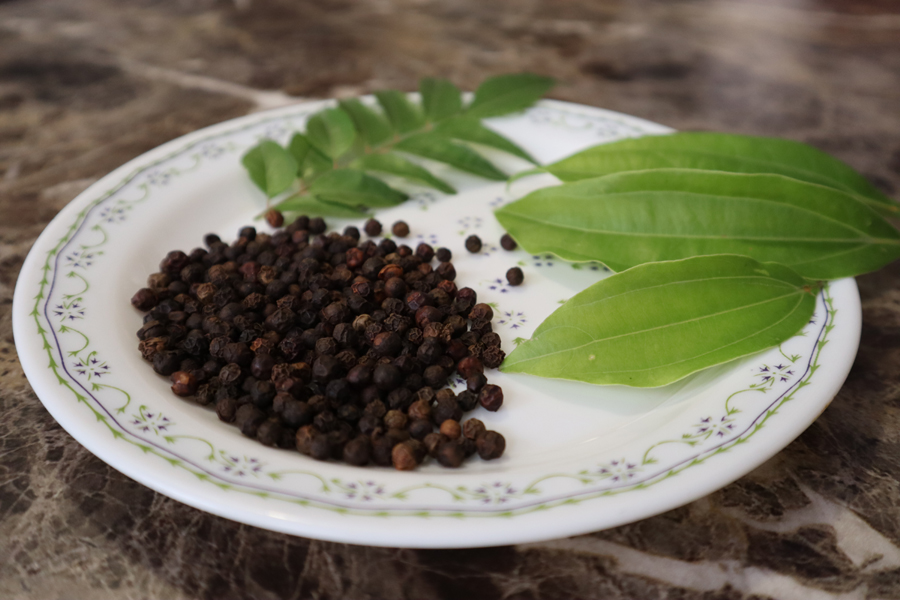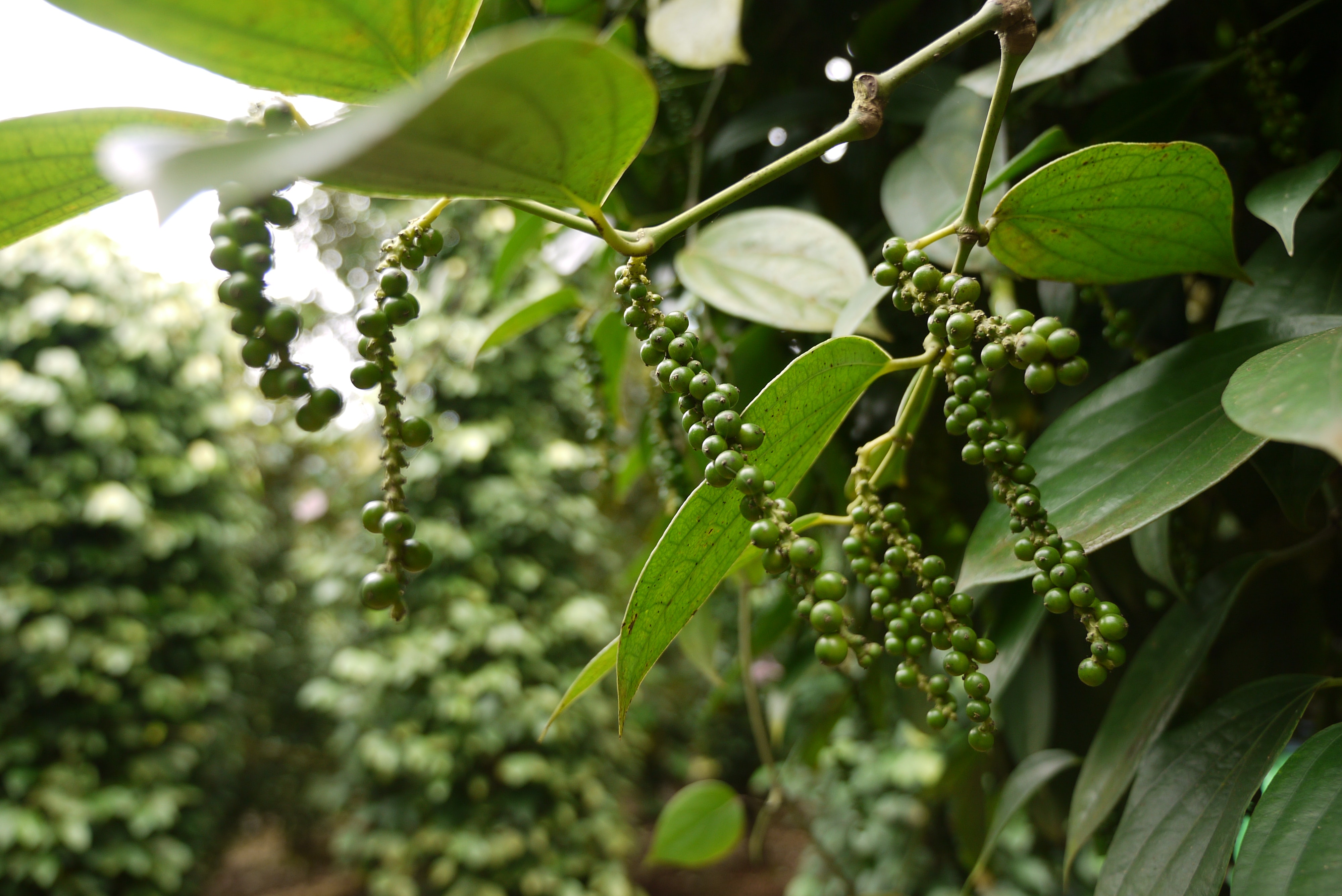
It gives heat and depth. It seasons food. Just a pinch of it enhances flavour. . . and exudes a tantalizing aroma, into the bargain. Yes, black pepper as a condiment delivers, the entirety. Any cuisine the world over—oriental or continental, black pepper, by far, helps the dish into a culinary delight.
Popularity
Labelled a ‘master spice,’ ‘king of spice,’ or ‘black gold,’ “it is worth its weight in gold,” comment, the celebrity chef-de-cuisines throughout the world. In Western culture, the dining table in every household is conspicuous by the presence of salt and pepper shakers—so are they the customary table décor in restaurants around the world.
The kitchens on the other, house hand-held pepper-mills. A favourite of the gastronomes, their discerning palates can even nail down the absence of black pepper in a dish if the recipe calls for it. I cannot even imagine how the celebrity chef, Gordon Ramsey, would react to his pupils if he finds that kind of a slip. “Only God can save them, poor guys!”

From an oriental delight like the simple Chinese chilly chicken, the Korean shabu shabu (beef and mushroom hotpot), the Thai naam phrik phrik thai soht (pork, shrimp and peppercorn), the Japanese sushi, to the Italian pizza, the epic French cassoulet (duck meat, pork sausage served with beans), the German spätzle (pasta and potato) to the American hamburger—all liberally use black pepper.
Needless to say, the favourites of all, the Butter chicken, Matar paneer or for that matter a mile-long list of mouthwatering delicacies from India cannot do without the black pepper. In our Nepali kitchen, too, we use black pepper, although sparingly.

Origin
Biologically called pipur nigrum, history traces the origin of this ‘wonder berry’ to the Western Ghats of Kerala and the Malabar Coast, the coastal plain of Karnataka and Kerala, India. It grows on vines and bears tiny fruit called peppercorn. Harvested while still green, sun-drying gives them the dark-brown with partial black color and their wrinkly texture. The same peppercorn gets its white color after the outer layer is removed before or after drying.

The largest producers of black pepper in the world include Vietnam, Brazil, Indonesia, China, and India, among others. Surprisingly, the current figures show pepper to account for nearly 35% of the total world trade in spices.
In Nepal, black pepper plantation stands virtually at nought. Other than sparse cultivation done in east Nepal, Jhapa, the entire bulk of our consumption comes from India.
Ayurveda
For millennia, Ayurveda (the science of life and knowledge) has held black pepper high for its healing properties. The ancient science advocates that our body and its health status is regulated by the three forces of nature called: Vata (air and space), Pitta (fire and water), and Kapha (water and earth) also explained as the doshas. Loaded with energy gained from the sun, the intake of black pepper or marich (in Sanskrit, it translates to the sun), pacifies and fortifies them.
Ayurveda maintains that the substance called piperine in black pepper and its essential oil helps cure disorders and maladies such as the respiratory infection, common fever, rheumatism, arthritis, cuts down the risk of cancers, and many more.
Home remedies
For common ailments we face in everyday life, black pepper is considered to work as a panacea.
- In case of loss of appetite, black peppercorns ground into a paste and mixed with a little honey stimulates digestion.
- Common cold and runny nose are a miserable experience for all. Half a spoon of crushed peppercorn with a pinch of turmeric powder boiled in milk and taken (one glass) at bedtime helps. Black-pepper-tea boiled with ginger and taken with a little honey is also considered fruitful.
- A dash of powdered black pepper in a hot soup alleviates problems like stuffy nose and sore throat.
- To aid indigestion, a cup of buttermilk with a pinch of freshly ground black pepper and cumin powder helps.

Over and above, black pepper is also said to work against acidity, flatulence, congestion. Its intake is also supposed to aid dental care, skin-care, and getting rid of stubborn dandruff.
Modern science
Apart from the above, modern science, too, vouches for the health benefits of black pepper. Research has led to the findings that the tiny black berry packs a mind-boggling load of nutrients that include vitamins, minerals, dietary fiber, and protein.
Black Pepper Nutrition Facts (Serving Size: 3.5 ounces/100 grams, raw
Amt. per Serving
% Daily
Value*
Calories
251
Calories from Fat
27
Total Fat
1 g
Saturated Fat
1 g
Trans Fat
Cholesterol
0 mg
Sodium
20 mg
Total Carbohydrates
64 g
Dietary Fiber
25 g
Sugar
0.64 g
Protein
10 g
Vitamin A 547 IU
Vitamin E
1 mg
Calcium
443 mg
Iron
10 mg
*Percent Daily Values are based on a 2,000 calorie diet. Your daily values may be higher or lower depending on your calorie needs. Source: www.mercola.com
Combats cancers
A peer-reviewed research paper published in a medical journal submitted by Rafiq A. Rather and Madhulika Bhagaty elucidated: “Piperine is an active alkaloid with an excellent spectrum of therapeutic activities such as anti-oxidant, anti-inflammatory, immunomodulatory, anti-asthmatic, anti-convulsant, anti-mutagenic, antimycobacterial, anti-amoebic, and anti-cancer activities.”
For this reason, scientists and researchers across the globe are optimistic about the cancer-combating possibilities of piperine found in black pepper for breast, prostate, and colon cancer.
Blood sugar
November 14 is recognized as World Diabetes Day. Notwithstanding the widespread awareness about the imparity that latches on to a person for life, according to WHO, the figure of people with diabetes rose from 108 million in 1980 to a whopping 422 million in 2014. In Nepal, too, diabetes has reared its ugly head in recent years.
In Nepal, considered something that struck only old people some three decades ago, even youngsters today aged as less as 20, for lifestyle and diet-related reasons, are contracting it, and the trend is on the rapid rise every year especially in urban areas. The 2016 Diabetes Profile of Nepal shows almost 12 per cent Nepali population suffering from diabetes.
The antioxidant compound in black pepper is said to help stabilize blood sugar level and improve insulin resistance in the body. The regular intake of black pepper in the diet also aids to shed weight and check the onset of obesity-induced diabetes.
Medical research has revealed that curcumin found in turmeric (read the author’s earlier article) is beneficial to diabetes. To tap the full potential of curcumin, the piperine in black pepper boosts the bioavailability of curcumin in turmeric by as high as 200 per cent.
Hypertension
The American Heart Association recommends the intake of sodium (1,500 to 2,300mg a day), or salt in simple language, in our diet to maintain the pH balance, sustain the thyroid, and balance the body hormones. Ironically, it is salt that happens to be one of the causes of hypertension. The quantity of salt we consume, however, often exceeds the recommended dose and we run the risk of hypertension.
Both high and low blood pressure benefit from the intake of black pepper. Research experts believe the potassium found in black pepper stabilizes heart rate and regulate blood pressure while the iron content in it aids low blood pressure.
There is more
The goodness of black pepper in our regular diet is further characterized by a plethora of possible benefits. For its anti-inflammatory compounds, black pepper is said to nourish the liver, enhance digestion, and improve cognitive function to relieving peptic ulcer and preventing asthma.
How to ingest
The list for the use of freshly crushed black pepper in our everyday life is long by a mile. It goes well with any meal you can think of in your kitchen—from simple curries including meat, fish, or no matter what kind, to soups, pasta to sunny side-ups and buttermilk.

Needless to say, it’s the life of salads, any kind. Little matters, what mode of cooking you are doing—baking, roasting, frying, stir-frying, grilling, broiling, you name it. I, for one, liberally use it in every single dish. I cannot do without it, period.
Folks, the ‘black gold’ surefire way does its bit both to your health and your food. I would not be wrong in saying that it’s the ‘spice of life’. Would I? Is it not time you kept a hand-mill within easy reach in your kitchen shelf and a pepper shaker on your dining table?
Disclaimer: The views expressed in the above text are solely research-based and the dietary information given does not constitute any medical advice. Cross-reference and reader discretion are solicited.
Warning: Reproduction or copy-pasting of this text in magazines or websites without the consent of the author is strictly prohibited. Failing that violators will be held liable for plagiarism.


















